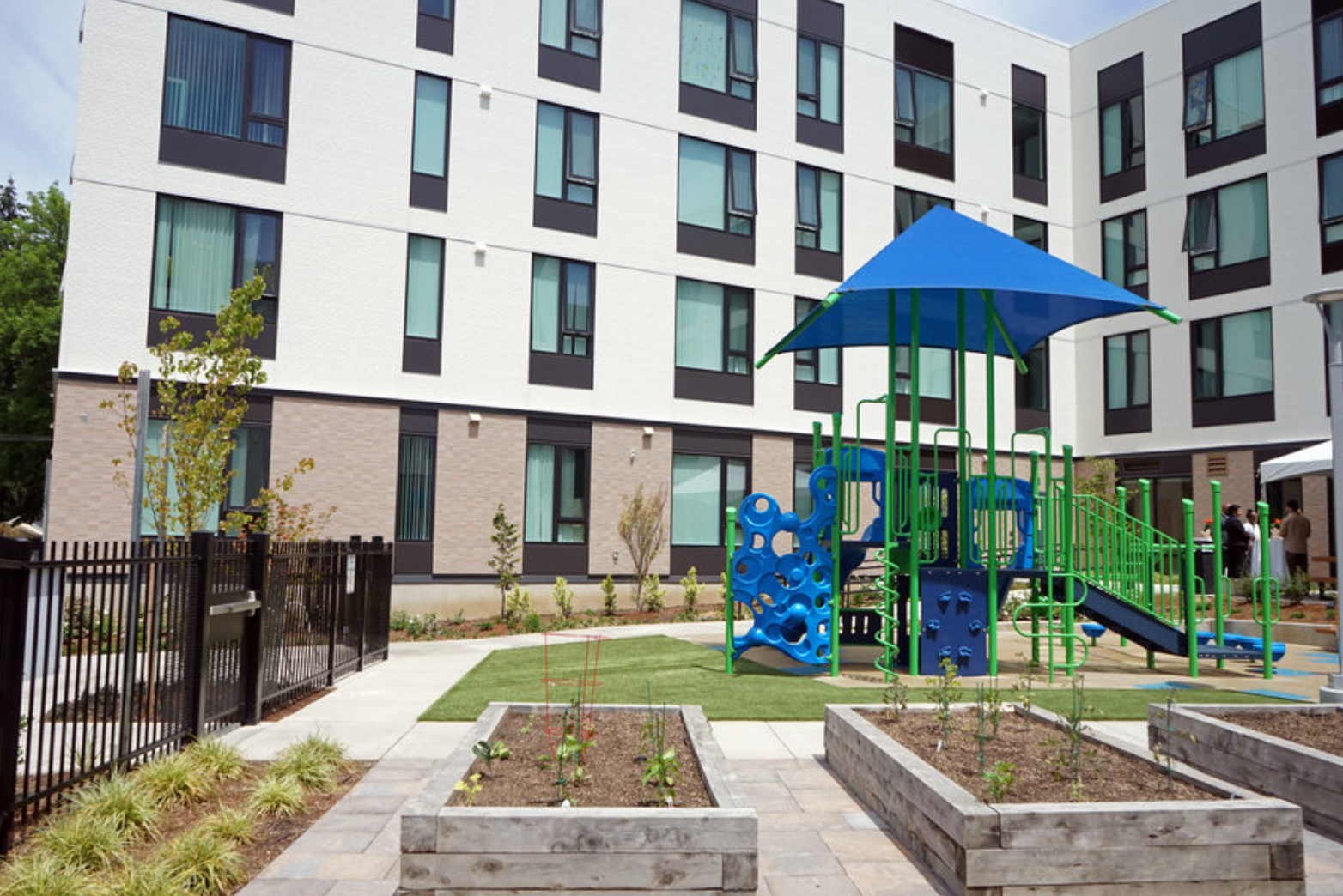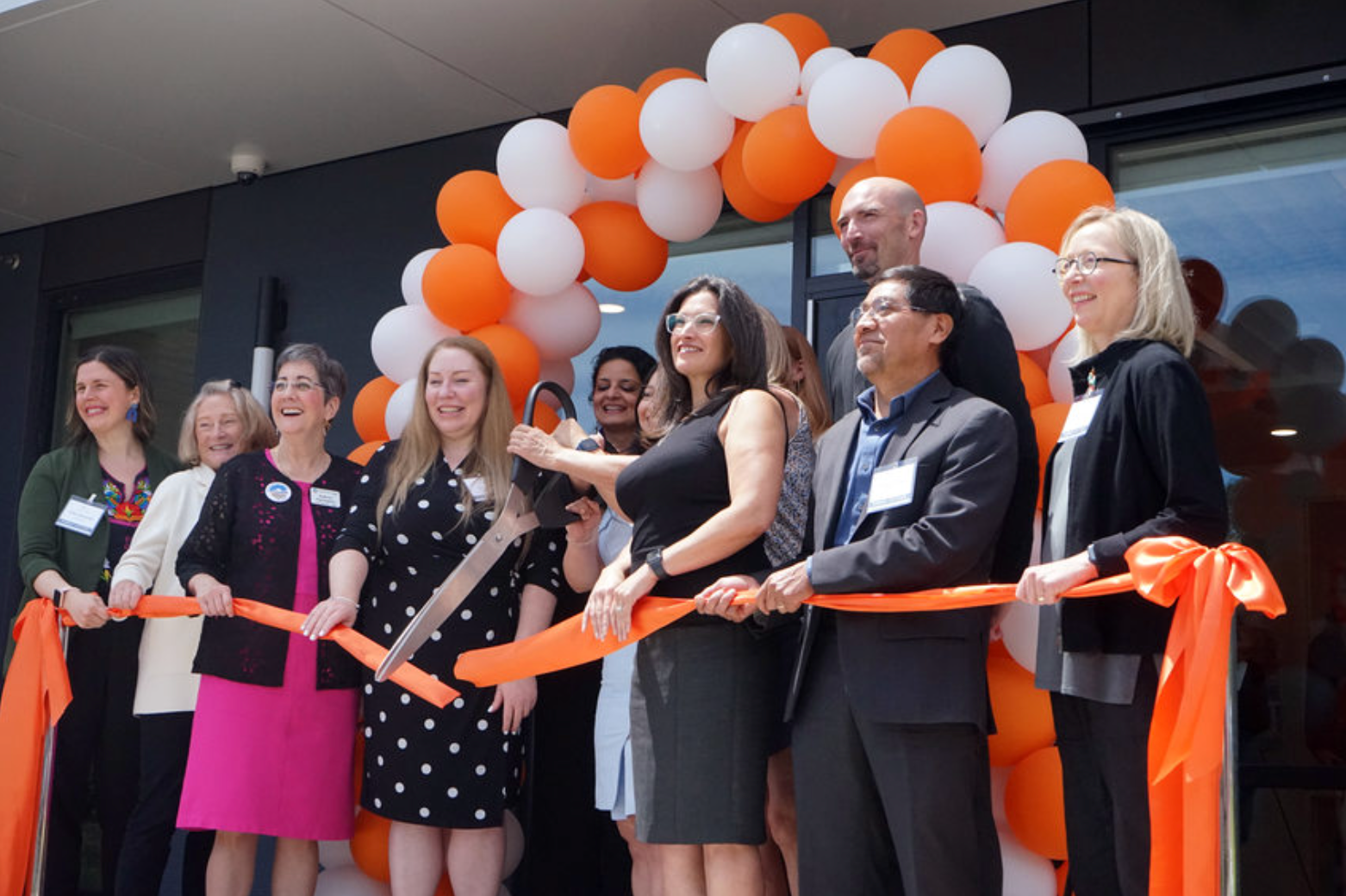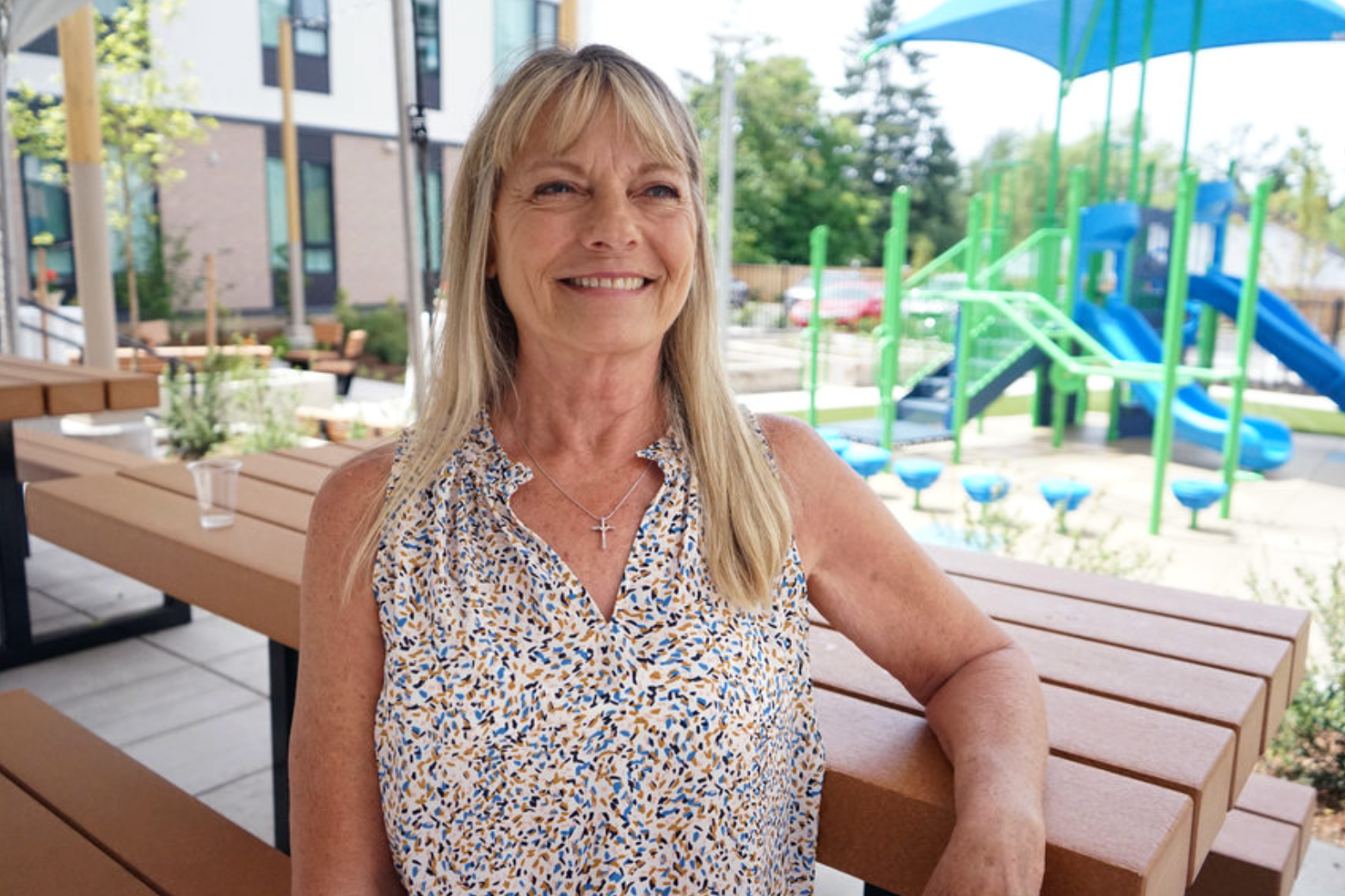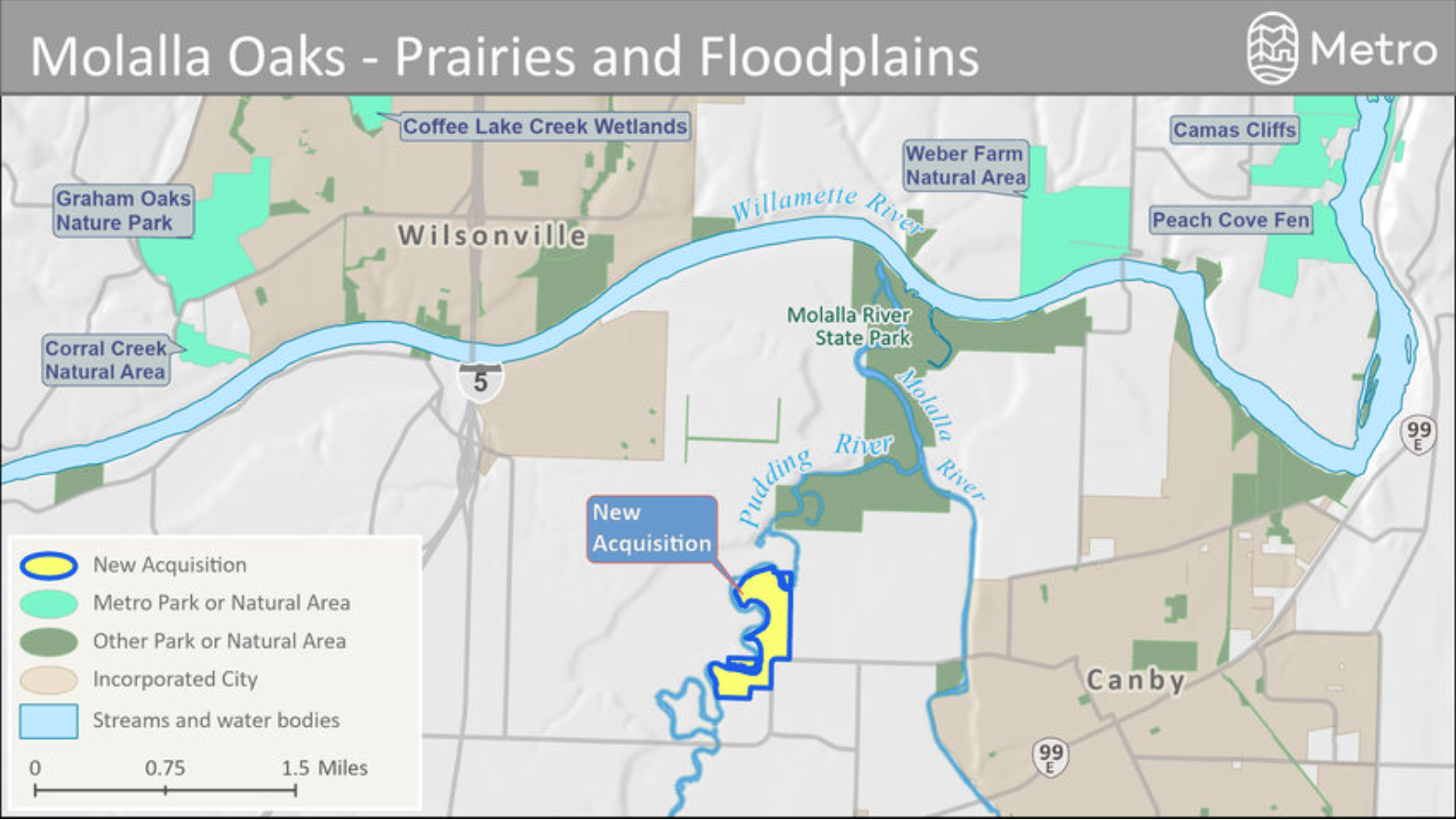Learn about the latest News & Events for MRG, and sign up to receive news updates.
Get Issuer Alerts
Add this issuer to your watchlist to get alerts about important updates.
Learn about the latest News & Events for MRG, and sign up to receive news updates.
Upcoming Events
03/25/2025
03/25/2025
Bond Sale
Bond Sale
Active
- Sale Date
- 03/25/2025
- Par Amount
- $200,000,000
- Method of Sale
- Competitive
- Tax Status
- Tax-Exempt
News & Press Releases
News
February 25, 2025
Today Metro Parks and Nature announced the purchase of 553 acres adjacent to the Clackamas River to restore into a natural area that will support fish and wildlife, protect water quality and preserve the area’s natural beauty.
“This is truly a historic moment, both for Metro and for the region as a whole,” said Metro Council President Lynn Peterson. “The chance to purchase and restore this much land at one time is rare, especially in a location with such potential to improve the surrounding area’s ecology. We are doing what voters entrusted us to do when they passed the 2019 parks and nature bond: Protecting and restoring the green spaces that make our region so special.”
The $6.4 million sale was made possible by funding from the Protect and Restore Land program of the 2019 voter-approved parks and nature bond. It is the second-largest acquisition to be made with parks and nature bond funding in the agency’s history.
The property, half of which has operated as the Eagle Creek Golf Course, has been for sale since 2021. While the sale closed on Feb. 24, Metro will not take full management of the site until late March to allow the seller time to wind down operations and sell equipment, golf greens and other assets kept at the property.
James Bastasch, representative of the family-run partnership that owns the property, announced earlier this year that the course would close on March 1.
“My family has proudly managed this golf course for over 20 years, providing enjoyment to our community,” said Bastasch. “However, after careful consideration of various economic challenges, particularly the acute shortage of water resources, we have come to the tough conclusion that it is no longer viable to continue operations. We have long discussed the possibility of finding a nonprofit organization to acquire this land and maintain its integrity. My parents shared this vision before they passed, and I am pleased to see it come to fruition with an agency like Metro committed to preserving its natural beauty.”
“Metro Parks and Nature is excited about the potential this acquisition has to improve the health of people, plants, wildlife and fish,” said Dan Moeller, Metro Parks and Nature conservation program director. “Restoring developed land to wilderness is a big job, but we have a lot of experience with this work and are more than ready for the challenge.”
Metro Parks and Nature has not announced specific plans for the property. Whenever the agency acquires land, staff spend extensive time studying it and assessing how to best restore it. During this initial phase of work, which could last up to five years, Metro will secure the property to prevent injury to people or damage to new plantings.
While every property is different, some initial actions are likely: removing old structures on the property, replacing invasive plant species with native ones, and restoring the natural flow of water through the land. With restoration, part of the property should be able to support a sizable amount of Oregon white oak.
“Our work here will have profound benefits for this region for generations to come,” said Moeller. “Increasing the region’s tree canopy helps to lower ground temperatures and to clean air. Meanwhile, restoring floodplains helps to keep water cleaner and cooler for fish and amphibians. It also allows the land to hold onto water, which helps decrease the effects of both drought and flooding.”
Metro’s work will also improve the experience of visitors at Bonnie Lure State Recreation Area, located just downstream from the property. The restored area will improve water quality for visitors recreating in the Clackamas River. Also, because many plant and animal species thrive best in larger areas of habitat, it will provide a richer and more varied experience of nature for park visitors.
This is the 34th land acquisition purchased with funding from the 2019 parks and nature bond, which has protected more than 1,500 acres and almost 1.4 miles of trail right-of-way in greater Portland so far.
News
December 13, 2024
Metro Council on Dec 12 unanimously approved $10 million of grant funding to benefit fish and wildlife and strengthen community access to nature near Kellogg Creek in Milwaukie.
“To know that when we are taking a vote, community needs are being met, is exciting,” said Metro Councilor Christine Lewis, who represents District 2 where the project is located.
The Kellogg Creek Restoration and Community Enhancement Project has been in the works for years and addresses a more than 150-year-old issue plaguing the creek. Now, thanks to funding through Metro’s Large-Scale Community Visions Program, the project can move toward completion over the next several years.
The restoration project centers around removal of the obsolete Kellogg Dam and replacement of the Kellogg Bridge on Highway 99E. Removing this barrier will provide fish access to 17 miles of habitat and will restore the currently muddy, shallow and algae-filled area behind the dam.
“Willamette River salmon, steelhead, as well as Pacific lamprey will be top of the list of beneficiaries because this area is vital rearing and migration habitat,” said Neil Schulman, executive director of the North Clackamas Watersheds Council, one of the organizations leading the project. “So will people who live, work, and go to school in Milwaukie and throughout the Lower Willamette Basin.”
Large-Scale Community Visions Program funding can go to capital projects that devote at least $2 million to habitat restoration and that engage with historically marginalized communities, among other requirements.
The grant program’s director, Linda Bartolini Venegas, said, “The project’s intersection of nature with transportation improvements aligns with the vision of the Large-Scale Community Visions Program of a transformative, regional-scale project that will strengthen climate resilience.”
The Large-Scale Community Visions grant offers a unique opportunity for additional funding, as agencies working on Kellogg Creek can leverage the $10 million awarded by Metro to access around $50 million in federal funding, which is crucial for the project’s completion.
"We are making an investment as a region, but more than that, we're giving the local community what they need to draw support from the federal government,” Lewis said.
The multifaceted Kellogg Creek restoration project will be a collaborative effort between North Clackamas Watersheds Council, the City of Milwaukie, Oregon Department of Transportation and American Rivers. This collaboration is a crucial component of the project’s success, says April McEwen, a program director with American Rivers and the restoration project manager.
"Transformational river restoration and infrastructure improvement projects require an extremely coordinated approach, with strong partnerships between the entities that can deliver the project,” McEwen said.
This project is also a priority for local tribes, including the Confederated Tribes of Warm Springs and the Confederated Tribes of Grand Ronde. Both tribes participate on the Kellogg Creek project’s technical advisory committee.
The tribes submitted testimony in support of the project’s funding, as it benefits culturally significant fish species.
“Kellogg Dam has blocked these streams since Statehood and has served no purpose since the 1890s. The time to remove this important barrier is now,” read the final line of both statements.
Kellogg Dam was originally built in 1858 for a flour mill that ceased functioning in the 1890s. It is a near-total barrier to local spawning fish and to rearing-and-resting habitat for threatened and endangered salmon and steelhead populations.
In addition to benefiting fish habitat, this work will restore a 14-acre impoundment, an area behind a dam, into healthier riparian habitat. It will also benefit people living nearby by restoring the floodplain.
“The No. 1 community complaint we get about watersheds by far is about flooding,” Schulman said. “When this project is completed, the impoundment will provide a place for floodwaters to go before they end up in someone’s basement.”
During restoration, the impoundment will be drained. This offers a rare opportunity for the Confederated Tribes of the Umatilla Indian Reservation to monitor and propagate new populations of a native freshwater mussel known as the Oregon floater, currently inhabiting the creek upstream of the dam. These important freshwater mussels are facing population decline.
The project will also replace the 89-year-old Kellogg Creek Bridge on Highway 99E, as the dam forms part of the bridge's foundation. Replacing the bridge will increase infrastructure resiliency and create a more earthquake safe bridge.
“The Kellogg Project is a fantastic opportunity to upgrade aging transportation infrastructure,” said Oregon Department of Transportation engineer Jonathan Horowitz.
The projects calls for an underpass below the Highway 99E bridge which will directly connect downtown Milwaukie to the parks and natural areas along the Lower Willamette River. Currently, pedestrians must cross the highway to reach the river from downtown.
“Trying to cross Highway 99 is not fun, it has high capacity and fast speeds,” said Shelli Romero, area manager for the ODOT.
This work will also create a safe passage for students at local schools who participate in an outdoor education program run by the watersheds council called the Kellogg Creek Student Macroinvertebrate Monitoring Program.
Once the impoundment and floodplain are restored, the area near Kellogg Creek will become a prime environment for outdoor recreation.
With water flowing, no longer stifled by the dam, people can canoe in the stream and walk along the water without being waist-deep in mud.
“Removing Kellogg Dam, restoring the creek and creating the undercrossing is a rare opportunity to restore nature as a defining element of Milwaukie’s downtown, and connect to affordable housing,” says Joseph Briglio, the City of Milwaukie’s assistant city manager.
The City of Milwaukie plans to develop a natural area along the stream that connects to nearby trails.
Current plans have construction starting in 2028 with completion in 2030.
News
June 17, 2024
Metro’s affordable housing bond and transit-oriented development program helped fund the construction of Cedar Rising, an affordable housing complex in Aloha. Thirty-three apartments are reserved for households with incomes at or below 30% of the area median income.
Thursday, June 13, Metro joined Washington County and other project partners to celebrate the grand opening of Cedar Rising. This affordable apartment community was the second in Aloha to be completed with funding from Metro’s affordable housing bond, following Heartwood Commons, which opened last spring. The Metro bond paid for about a third of the total development cost. Over 1,470 affordable homes have been built using funds from the voter-approved bond, with 3,200 more on the way.
Cedar Rising brings 31 studio and one-bedroom homes and 50 two- and three-bedroom homes to the Aloha community. Thirty-three apartments are reserved for households with incomes below 30% of the area median income ($33,840 for a household of four), and 48 are for households with incomes at or below 60% AMI ($67,680). Rents range from $555 to $1,706, depending on the number of bedrooms and household income.

Cedar Rising was developed by BRIDGE Housing and designed by Scott Edwards Architecture. On-site services are provided by Hacienda CDC, with a focus on support tailored for members of the Latine and Asian communities, which make up more than a third of Aloha’s population. These services include after-school programs, early childhood education, and assistance with maintaining housing stability.
“With these services Cedar Rising is more than just a place to live; it is a place to learn, grow and thrive,” said Metro Regional Housing Director Patricia Rojas. “Today’s grand opening fills me with joy, knowing people’s lives will get better because of these buildings.”

The apartment complex features a courtyard with a community garden, playground and barbecue grills. Grocery stores in the area include Philippine Market, Fruteria El Campesino and Viet & Thai Market. One-Stop urgent care and Kaiser Aloha Dental Care are also nearby. Tualatin Hills Nature Park, Kinnaman Elementary, Mountain View Middle and Aloha High Schools are all within a mile.
Cedar Rising is located one block from the Tualatin Valley Highway, where Metro and regional partners are working to improve public transit options. In recognition of the development’s proximity to this important transportation corridor, the project also received $450,000 in funds from Metro’s transit-oriented development program.

Resident Julie Case – who moved into Cedar Rising in January this year – shared her experience in the new apartment community. Julie was living briefly with a friend in Las Vegas while she searched remotely for an affordable apartment in the Aloha area, which she had called home for years. She was excited and relieved when her application to move into Cedar Rising was accepted. This meant she could return to her home community and live on her own again. Julie’s daughter and granddaughter live nearby and visit often.
In addition to being close to family, “one of the best things about living here is the sense of community and the neighbors,” she said. “From day one, everyone I’ve met has been so warm and friendly. It’s wonderful to be surrounded by such kind people, including staff.”
News
May 22, 2024
Voters in greater Portland have approved further investments in species conservation, with the passage of Measure 26-244, Metro’s Oregon Zoo bond renewal.
As of the afternoon May 22, Measure 26-244 was passing with 55% of the vote.
The measure, which was referred to voters by the Metro Council, authorizes $380 million in bonds to support new facilities at the 65-year-old Oregon Zoo campus. Proposed improvements include renovation or replacement of some of the zoo’s oldest animal areas, educational exhibits, visitor facilities and infrastructure.
Staff at the Oregon Zoo has developed a draft campus plan, which will be reviewed by the Metro Council later this year.
The average estimated tax rate of the proposed bonds would be $0.085 per $1,000 of assessed property value.
Voters last approved a zoo bond measure in 2008. Projects funded by that measure were completed in 2021, having upgraded roughly 40 percent of the zoo, with projects including Elephant Lands, Primate Forest, Polar Passage, Condors of the Columbia, a veterinary medical center and an education center.
“Oregonians have made it clear that they love the Oregon Zoo,” said Metro Council President Lynn Peterson. “The staff at the Oregon Zoo has done incredible work supporting conservation of wildlife, like the California condor, Oregon silverspot butterfly and the potential return of sea otters to the Oregon Coast. This is a huge vote of confidence from the public in our mission and, frankly, ourselves.”
News
February 29, 2024
Metro’s latest land acquisition is a first step in conserving land in its recently created Molalla Oaks, Prairies and Floodplains target area. And as first steps go, it’s a big one: The 109-acre purchase protects almost 2 miles of the Pudding River’s frontage.
Target areas help Metro expedite funding from the voter-approved 2019 parks and nature bond measure’s Protect and Restore Land program. Land in these specially designated categories – generally defined by both geographical location and habitat type – is pre-approved for acquisition by Metro Council, allowing for a faster acquisition process.
Some of the 24 target areas listed in the bond were identified in previous bonds. However, the Molalla Oaks, Prairies, and Floodplains target area is new to the 2019 bond. It was established through working with members of greater Portland’s Indigenous communities. Investments in this target area focus on sustaining the area’s vibrant and culturally important native plants and wildlife by protecting and connecting oak, prairie and floodplain habitats in the Middle Willamette Valley with Canemah Bluff, Willamette Narrows and the Willamette River Greenway to the north.

“This important acquisition will have long-reaching benefits for our region that will be felt by generations to come,” said Metro real estate manager Shannon Leary. “It is rare to have a chance to protect this long a stretch of riverbank, especially with an opportunity to reestablish native floodplain forest and wetlands, home to many culturally significant plants and animals.”
The Pudding River supports species including coastal cutthroat trout, western painted turtle, northwestern pond turtle, winter steelhead, spring Chinook, coho and Pacific lamprey. It feeds into the Molalla River, which feeds in turn into the Willamette. Because this new acquisition is located just a short distance upstream from Molalla River State Park, restoring it will build habitat connectivity for local wildlife.
The $1.5 million purchase closed at the end of January. Now the work of researching the area and beginning restoration can take place.
“We look forward to the next phase of stabilizing the property, which will help floodwaters to be retained longer on the property, filtering pollutants and protecting groundwater,” said Leary. The opportunity to improve water quality along the Pudding River is especially significant given that the river is 303(d) listed under the Clean Water Act for excessive pesticides, bacteria and temperature.
This is the 20th land acquisition purchased with funding from the 2019 parks and nature bond, which has protected a total of 692 acres in greater Portland so far.

